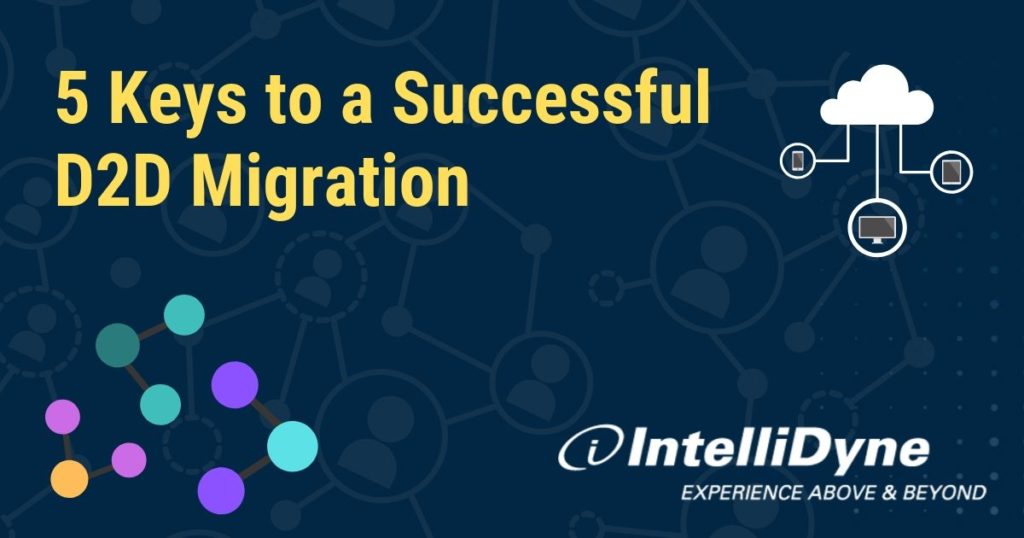Those familiar with the Defense Health Agency’s enterprise IT upgrade initiative know that there are a lot of moving parts to what DHA calls Desktop to Datacenter, or D2D. D2D aims to streamline health IT service lines across the Military Health System. Naturally, that includes a lot of puzzle pieces, including:
- migrating clinical systems, workstation kiosks, servers, and medical devices to the shared network called the Medical Community of Interest (Med-COI)
- providing a consolidated helpdesk
- coordinating with military hospitals and clinics to collect and organize data for the migration
- enabling users throughout the military health IT system to communicate using a common desktop, and
- employing a single security architecture, among other requirements
There are some core issues to take into consideration when managing a datacenter migration – we have listed five of them below. We believe that it is important to partner with a trusted IT consultant who not only helps agencies prepare for and implement their migration, but is there to support agencies following the migration. Learn more about IntelliDyne’s Desktop to Datacenter capabilities.
1. Be sure your team is prepared for a complete migration
Agencies need a migration consultant to conduct a full survey into your network of databases and enterprise applications. This includes incremental preparation steps such as: standardized desktop and network configurations, moving all sites to a common operating system, selecting and managing needed equipment for installation, and more. A trusted IT consultant with government experience can help your organization fully prepare and will be there to support you following the migration.
2. Determine a migration timeline and steps for each phase of implementation
It’s important to carefully schedule each step of your migration – from pre-deployment activities to enterprise-level central management – with consultants who understand the requirements at each step, and who know how to set expectations and schedules, from initial meeting to final rollout.
3. Build a plan to handle scheduled downtime
Downtime may be inevitable when undertaking a full datacenter migration. However, you can help ensure that your downtime is scheduled (and therefore minimally disruptive) with robust planning. Deep experience in government IT migrations is key.
4. Develop a site-specific plan
When multiple sites are to be migrated at the same time, multi-site organizations will need to plan for risk factors involved with geographically separated units (GSUs). Among the items that are important: network-specific transition sequences, making sure you have defined clear roles and responsibilities, and enabling concise communication plans. Engaging with a single IT consultant to manage the details will help with a smooth transition.
5. Envision what your new datacenter will look like to front-end decision makers
As an IT consulting firm with years of experience helping government agencies, we understand the natural focus on managing the backend of complex migrations. However, it’s important to also consider the view of executives who need to access data to make decisions. At IntelliDyne, we have developed Dashblox IPA to ensure that agencies’ siloed data is integrated on the front end as well, with a single view of all the info needed for day-to-day activities and reporting.
Want to hear more about our D2D capabilities, or discuss a potential initiative? Contact us today!

